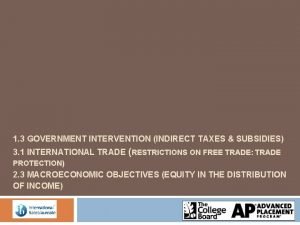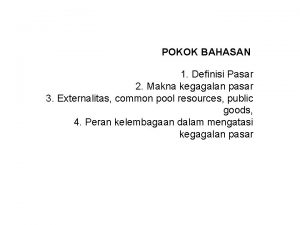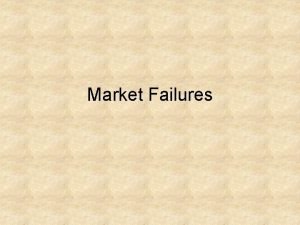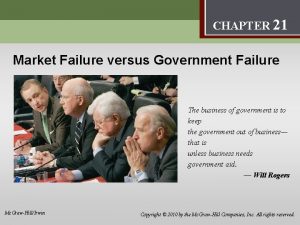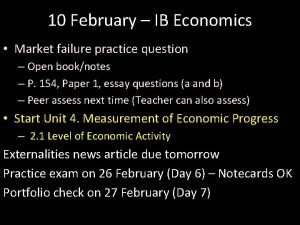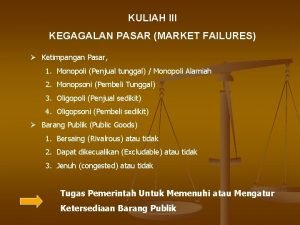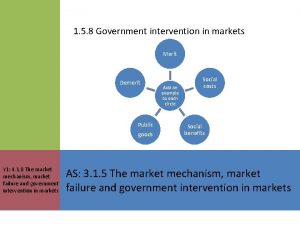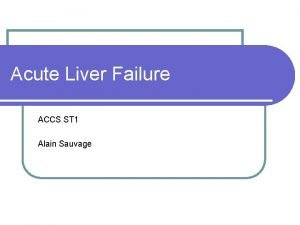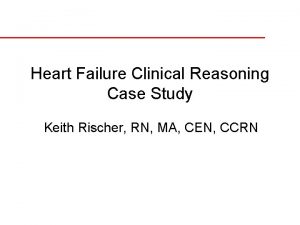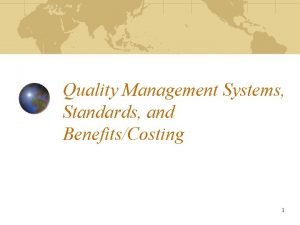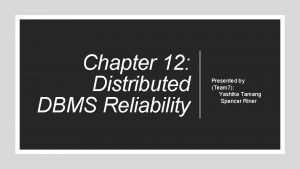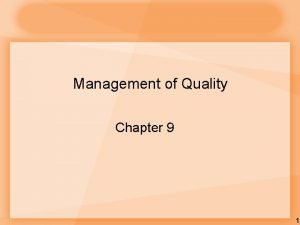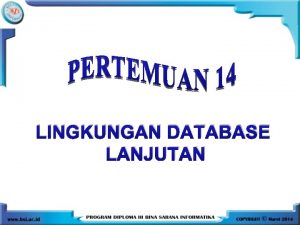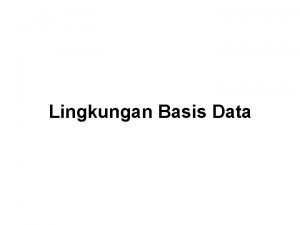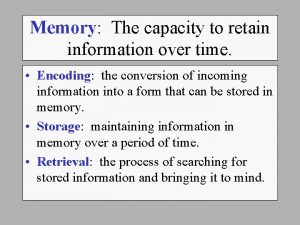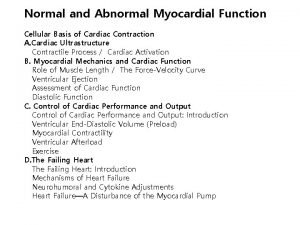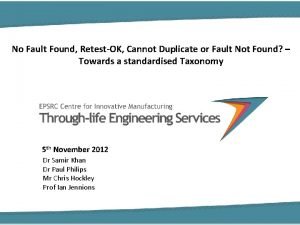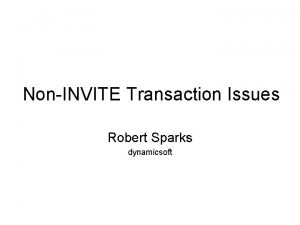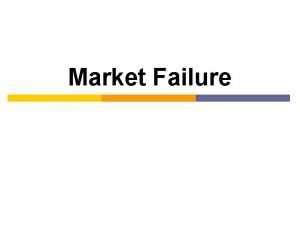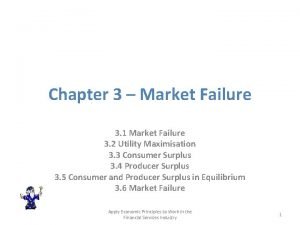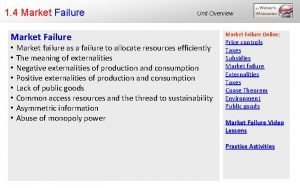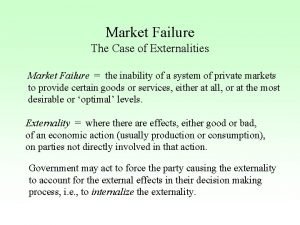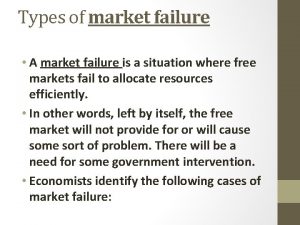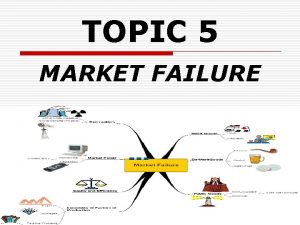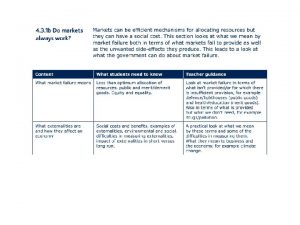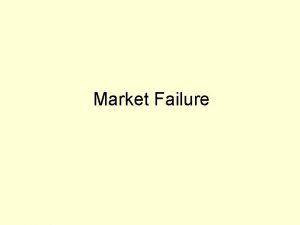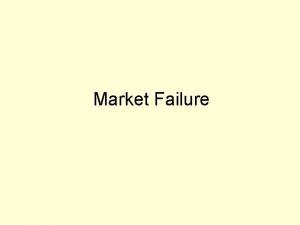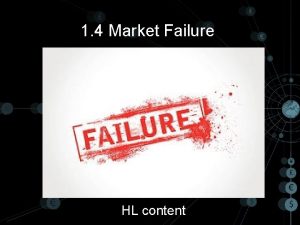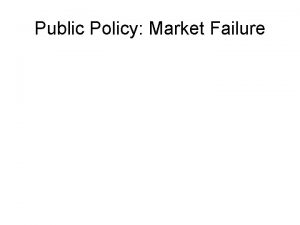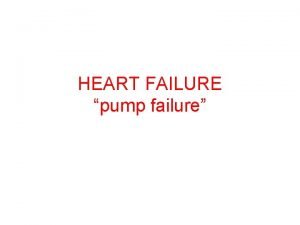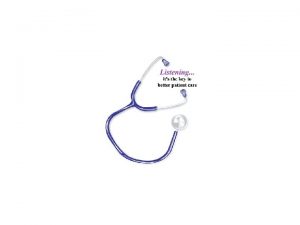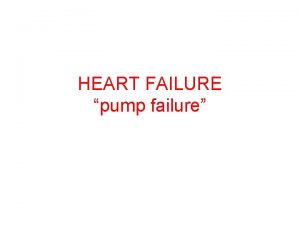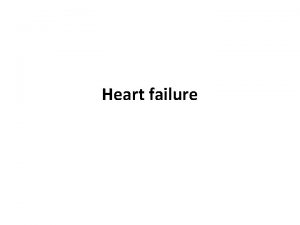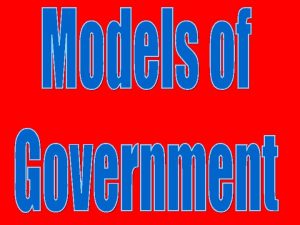Market Failure What is a market failure Market











































- Slides: 43

Market Failure

What is a ‘market failure’? Market failure is any situation where the allocation of resources by a free market is not efficient.

Allocative Efficiency n Pareto Optimality – is when a market is in equilibrium, with no external influences and with no external effects It exists when it is impossible to make someone better off without making someone else worse off n Socially efficient n Social efficiency exists when community surplus is maximized n

Community Surplus n n Is the welfare of society and it is made up of consumer surplus producer surplus Free market leads to an optimum allocation of resources and maximizes community surplus Supply curve is determined by the marginal costs of production (marginal social cost) Demand curve is determined by marginal utility (marginal social benefit)

Marginal Benefit (MB) § § § the benefit a person receives from consuming one more unit of a good or service the dollar value of other goods and services that a person is willing to give up to get one more unit of it decreasing marginal benefit implies that as more of a good or service is consumed, its MB decreases

Marginal Cost (MC) § § § the opportunity cost of producing one more unit of a good or service. the dollar value of other goods and services required to produce one more unit of the good. increasing marginal cost implies that as more of a good or service is produced, its marginal cost increases.

Consumer and Producer Surplus 20 P S = MC 15 Consumer Surplus 10 Producer Surplus 5 D = MB O 5 10 15 20 Q

Efficiency and Inefficiency § If MB>MC, should produce and consume more of the good.

20 P S = MC 15 MB > MC 10 5 D = MB O 5 10 15 20 Q

Efficiency and Inefficiency If MB>MC, should produce and consume more of the good § If MB<MC, should produce and consume less of the good §

20 P S = MC 15 MB < MC 10 5 D = MB O 5 10 15 20 Q

Efficiency and Inefficiency If MB>MC, should produce and consume more of the good § If MB<MC, should produce and consume less of the good § If MB=MC, allocative efficiency obtained §

Consumer and Producer 20 P S = MC 15 Consumer Surplus 10 Producer Surplus 5 D = MB O 5 10 15 20 Q

Society’s benefit & costs n MB becomes MSB (marginal social benefit) n MC becomes MSC (marginal social cost) n MSC – ‘true’ supply curve because it shows all the costs to society

Consumer and Producer 20 P S = MC = MSC 15 Consumer Surplus 10 Producer Surplus 5 D = MB = MSB O 5 10 15 20 Q

Deadweight loss from overproduction.

Deadweight loss from underproduction.

Market Failure n n Exists when community surplus is not maximized When markets fail, governments are often expected to intervene in order to attempt to eliminate the market failure and move towards the optimal allocation of resources

Types of Market Failure n The existence of externalities Negative Externality n Positive Externality n n n Lack of public goods Common access to resources and threat to sustainability Asymmetric information Abuse of monopoly power

Market Failure n n External Costs Decision makers do not take into account the cost imposed on society and others as a result of their decision n e. g. pollution, traffic congestion, environmental degradation, depletion of the ozone layer, misuse of alcohol, tobacco, anti-social behaviour, drug abuse, poor housing

External Costs MSC = MPC + External Cost Price The Marginal Social Benefit Thedifference MPCtherefore doesbetween not istake into The true the MSC the curvecost (MSB) represents the account the cost to society of MPC (thevalue MPC plus external cost). thethe MSB andtothe MSC sum of benefits production. At antherefore output level Current output the levels (100) represents loss consumers in welfare society as a to of 100, the private cost to the represent some element of market society 100 private units being whole of – the and social supplier is £ 5 per but the failure – price does notunit accurately produced. benefits. The Marginal Private cost totrue society is higher than reflect the cost of production. Cost (MPC) curve represents this (£ 12). costs negative to suppliers of Value ofthethe producing a given output. £ 12 Social Cost £ 7 £ 5 externality (Welfare Loss) Socially efficient output is where MSC = MSB 80 100 Quantity Bought and Sold

Market Failure n External benefits – n By-products of production and decision making that raise the welfare of a third party n e. g. education and training, public transport, health education and preventative medicine, investment in housing maintenance, law and order

Price External Benefits MSC Value externality (Welfare Loss) £ 10 £ 6. 50 There can be a position where output is less than would be socially desirable (education for example? ) In this case, the sum of the benefits to society is greater the private benefit to the ofthan the positive individual. Social Benefits £ 5 MSB Socially efficient output is where MSC = MSB MPB 100 140 Quantity Bought and Sold

Meaning of Externalities n n Externality is a transaction where someone other than the buyer or seller (a third party), experiences a benefit or loss as a result of the transaction. Positive externality – good side-effects Negative externality – bad side-effects When externality occurs, there’s a diff. between society’s experience and that of the individual firm or consumer

NEGATIVE EXTERNALITIES OF PRODUCTION

Negative Externality: Costs of Production • External costs of production – MSC > MPC

External costs in production Costs and benefits S = MPC P D = MSB O Q 1 Quantity

External costs in production Costs and benefits MSC S = MPC P External cost D = MSB O Q 2 Social optimum Quantity Q 1

Examples of Negative Production Externalities • School and office furniture – Strong chemical glues and hardeners • Coal – When produced, creates pollution • Oil production – Spills and refinery pollution – Depletion of reserves

Potential Solution Negative Production Externalities • Taxes – Will shift the MPC curve to the left – This will raise the price and reduce quantity



Potential Solution • Taxes Negative Production Externalities – Advantages: • Reduces the size of the externality • Compels producers & consumers to pay the costs of their transaction • Brings output down towards the optimal level – Disadvantages: • Assessing the magnitude of the externality is extremely difficult • Determining the appropriate tax amt. is a challenge • Taxing the good may not deter pollution, only reduce it

Potential Solution Negative Production Externalities • Legislation and regulation – Gov’t. can enact laws to deter production of products or services that cause harm to others • Force cleaner production with improved technology • Order firms to reduce the amount of good produced • This will shift MPC to the left due to increase in cost of production – Extreme course: an outright ban on the good

Potential Solution Negative Production Externalities • Tradable permits – It’s a system for taxing pollution levels where pollution licenses are exchangeable between firms

POSITIVE EXTERNALITIES OF PRODUCTION

Positive Externality: Benefits of Production • External benefits of production – MSC < MPC

External benefits in production Costs and benefits MPC = S P D O Q 1 Quantity

External benefits in production Costs and benefits MPC = S MSC External benefit P D O Q 1 Quantity Q 2 Social optimum

Examples of Positive Production Externalities • Tree farms – Oxygenate the atmosphere • School in the neighborhood – Improve property values • Trained workers • R&D by one firm can benefit others • Software companies – Inspire others to create new products

Potential Solution Positive Production Externalities • Subsidies – Lump-sum payment or as per-unit subsidy – Paid by tax revenue, therefore incurs opportunity cost – Can be very costly • State provision of the article – Ex. Gov’t could provide training; devote large public land for tree farming


External costs and benefits in production D P External cost O Q 2 Q 1 Quantity (a ) External costs MPC = S MSC Costs and benefits (£) MSCMPC = S External benefit P O D Q 1 Q 2 Quantity (b) External benefits
 Failure to capture vs failure to sense
Failure to capture vs failure to sense Ductile fracture mechanism
Ductile fracture mechanism Non conducted pac ecg
Non conducted pac ecg Example of negative externality
Example of negative externality Define market failure
Define market failure Site:slidetodoc.com
Site:slidetodoc.com Pengertian market failure
Pengertian market failure Role of government in correcting market failure
Role of government in correcting market failure Market failure quiz
Market failure quiz Market failure examples
Market failure examples Ib economics market failure questions
Ib economics market failure questions Types of market failure
Types of market failure Kegagalan pasar adalah
Kegagalan pasar adalah Indirect tax to correct market failure
Indirect tax to correct market failure Types of market failure
Types of market failure Define market segmentation targeting and positioning
Define market segmentation targeting and positioning Leader challenger follower
Leader challenger follower What is failure demand
What is failure demand Encoding failure
Encoding failure Hepatic encephalopathy staging
Hepatic encephalopathy staging Keith rn heart failure case study
Keith rn heart failure case study Internal failure costs examples
Internal failure costs examples Houghton primary school uniform
Houghton primary school uniform Crane reliability survey
Crane reliability survey People often report an annoying memory failure
People often report an annoying memory failure Symbolism in chapter 9 of the great gatsby
Symbolism in chapter 9 of the great gatsby Nursing assessment for congestive heart failure
Nursing assessment for congestive heart failure Obermeyer gate failure
Obermeyer gate failure Distributed dbms reliability
Distributed dbms reliability Abyssinia league of nations failure
Abyssinia league of nations failure Tqm failure
Tqm failure Tenacity despite failure in entrepreneurship
Tenacity despite failure in entrepreneurship Buck converter failure modes
Buck converter failure modes Dr nienkemper
Dr nienkemper Memeriksa keakuratan dan validasi data disebut:
Memeriksa keakuratan dan validasi data disebut: Contoh lost update problem
Contoh lost update problem Portal hypertension definition
Portal hypertension definition Failure to thrive definition
Failure to thrive definition Encoding failure
Encoding failure Sysco sap failure
Sysco sap failure Forrester classification
Forrester classification No fault found
No fault found The failure of appeasement
The failure of appeasement Non-invite transaction failure
Non-invite transaction failure





